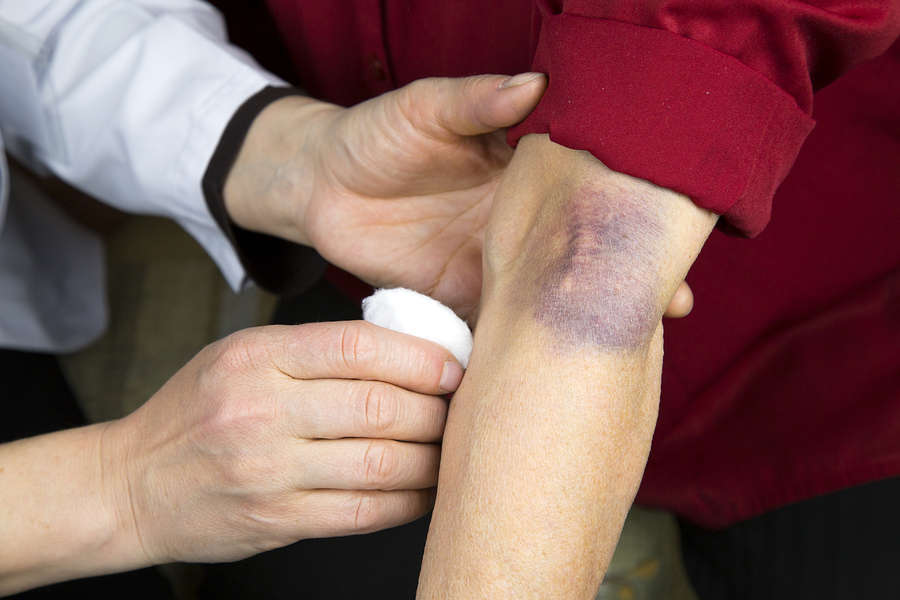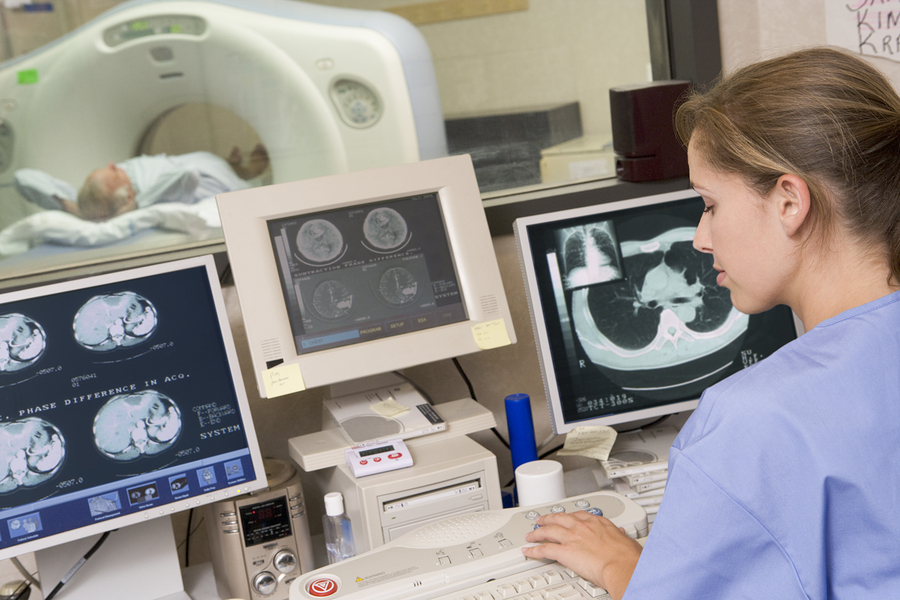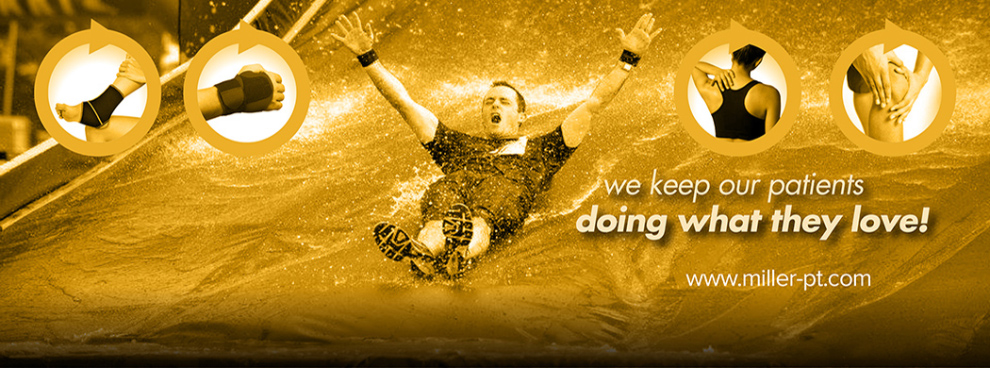Introduction
Physical therapy in Delray Beach for Contusions
A contusion is the medical term used for a ‘bruise.’ Contusions can be minor, like the one you get after clumsily hitting your thigh on the edge of the coffee table, to major ones like the contusion you may get across your chest or down your leg after a significant motor vehicle accident. Whatever the size, that red, blue, purple, green or brown rainbow that appears is a sure sign of injury to the tissues below or near the area.

This guide will help you understand:
- what causes a contusion
- why bruises are different *colours*
- how contusions are diagnosed
- what Miller PT’s approach to rehabilitation is
- what complications may occur
#testimonialslist|kind:all|display:slider|orderby:type|filter_utags_names:Knee Pain|limit:15|heading:Hear from some of our patients who we treated for *Knee Pain*#
Causes
What causes a contusion?
A contusion can result from a blow (or repetitive blows) to a specific part of your body, or can result from you hitting your body against a fixed object or the ground. When this occurs, injury occurs to the muscle fibers as well as the capillaries (which are small blood vessels) and blood leaks out of the injured cells into the surrounding areas beneath the skin. The injury does not break the skin.
How quickly a bruise develops depends on how forceful the trauma is that causes the injury. If you simply pinch a bit of skin in a zipper, you may see the bruise develop quickly, within a few minutes or within the hour, as the injury is close to the surface. In more forceful traumas, like during a fall or getting hit by an object such as a sports stick or helmet, the bruising may not come out for a few hours or even a couple of days. It should be noted that bruising could occur farther from an injury than you would think, as well. It is not uncommon to see bruising around your ankle after an injury or surgery to the hip or knee, or to see bruising in your hand after a shoulder injury. Gravity carries the escaped blood to the lowest point of the limb, hence showing up in the hanging hand or foot. It should also be noted that severe contusions on the abdomen or back could also injure the internal organs.
The size of the bruise you incur depends on what actually caused your injury, as well as how much force was involved in the injury. The larger the object you run into, the bigger the potential contusion. Evidently the more force involved in the blow, also the bigger the potential contusion.
Symptoms
What does a contusion feel like?
For most people, the feeling of a bruise need not be explained. What should be noted, however, is that one may feel like an area is bruised, and yet there is no objective sight of it. As mentioned above, the bleeding caused by trauma can be deep, and for this reason, the skin may not look bruised initially, but can feel tender. The classic bruise will likely make its way to the surface hours or days later, or the bruising may show up, as discussed above, farther away from the site of the trauma rather than right under the traumatized area.
What does the *colour* of a bruise mean?
The *colour* of a bruise depends on how fresh the injury is, or its stage of healing. Typically a new bruise will begin red, as fresh new blood is leaked into the surrounding tissues, which is rich in both oxygen and hemoglobin (a protein that contains iron). Sometimes the red stage isn’t noticed, as the area of impact isn’t looked at immediately. Not long after the blood has leaked out of the injured capillaries, the blood loses its oxygen, and the blood becomes darker, which turns the skin *colour* blue or purple. Over a few days the bruise may turn an even deeper purple *colour* or may even look black. This occurs due to the red blood cells being broken down and hemoglobin (and iron) being released into the surrounding tissues.

As your contusion begins to heal, a variety of other *colour*s may appear. Healing contusions begin to turn green as the hemoglobin in the tissues begins to convert to other chemicals. As the hemoglobin nears its final breakdown the bruise will turn yellow. Eventually the body absorbs the last of the damaged tissue and the skin returns to its normal *colour*ing.
It should be noted that most bruises are multi*colour*ed as different areas of the tissue are damaged at different intensities and with different forces. The worst of the damage, however, will be noted in the dark purple or black areas.
Diagnosis
How do health care professionals diagnose the problem?
Generally the presence of a contusion can be diagnosed by the patient themselves when they see it. Your health care professional may palpate (feel) around the contused area to see if there are any areas of hardness developing within the contused area, which can mean a complication is developing (see Complications below).
In most cases of contusions no further investigations are required, however, in cases where the extent of the damage to the injured area is in question, an ultrasound, magnetic resonance image (MRI) test, a computed tomography (CT) scan, or an x-ray may be ordered. These tests can help to determine whether the original injury has caused a significant or full tear of the muscle in the area, damage to an internal organ, or even a fracture to a local bone.

In cases where extensive bruising is occurring more than it should from the expected insult (ie: a large bruise from a small bump) or where bruising occurs more easily than it should, your health care professional may suggest you be investigated for systemic conditions which make bruising more likely such as hereditary blood diseases (ie: hemophilia). Some medications can also make bruising more likely (ie: blood thinners). Your health care professional will inquire regarding any general health conditions or medications you are on in order to determine if you have any specific reasons why you may be bruised or bruising more easily that normal.
Physician Review
What will my doctor do when I see them?
Depending on when exactly you get to see your doctor regarding your contusion, in most cases they will simply suggest immediate first aid to assist your bruise (rest, ice, compression, and elevation). In more severe cases if you are having difficulty moving your limb or dealing with significant pain they may suggest a painkiller type of medication, whether it be over the counter or prescription. In these cases the degree of damage of the tissue or bone may also be in question, so as mentioned above, your doctor may request further examination through an ultrasound, x-ray, computed tomography (CT) scan or MRI in order to determine the status of the soft tissue or underlying bone. Associated injury to a local nerve may also need to be ruled out.
Rehabilitation
The path of rehabilitation for your contusion will depend on when exactly you see your physical therapist. The earlier you can get in to see your therapist, the more they can help!
In the initial stages of healing of a contusion, the RICE principle still applies: Rest, Ice, Compression, and Elevation.
Your therapist will discuss with you how much rest you need and how much activity you can continue to do with your healing contusion. Resting doesn’t necessarily mean sitting around doing nothing at all. Rest means to make a relative decrease in the activities that you have normally been doing or at least those activities that you know irritate your contused muscle. That being said, some gentle stretching and movement of the contused muscle also helps to encourage the fluid and damaged tissue to move out of the area and assists the newly forming scar tissue to align in the correct direction. Your therapist will discuss how much rest you need and will prescribe the proper stretching and strengthening exercises for your stage of healing. If you have just incurred your injury, you may only be asked to slowly and gently move the muscle into its full range of motion, and work to isometrically tighten the muscle (squeeze and tighten the muscle without moving the actual joint near it). Some severe contusions may require complete rest for a short period of time; minimal movement over this time will allow the recovery process to begin without causing further pain or damage.
If your injury is already well on its way to recovery, your therapist may prescribe more aggressive stretching called dynamic stretching. Dynamic stretching is used to prepare your muscle for the repetitive and more aggressive movements needed for everyday activity and sport. Dynamic stretching involves moving your limbs repetitively and with controlled speed into their end range of motion so that the muscles get put on full stretch. If you are at the end stages of recovery from your contusion then your strengthening will be more aggressive as well. You may be asked to jump, squat, or move your limbs or torso aggressively and quickly in order to prepare the contused muscle to return to the repetitive and arbitrary movements that come with everyday life or sport.
Again, depending on how far along the healing of your injury is once you seek physical therapy, your therapist may or may not encourage ice. If you have just sustained your contusion (or within the last 48 hours), applying ice is essential to cut down on any unnecessary swelling and secondary injury to the tissues surrounding the main injury. Even if the injury occurred more than a couple of days ago, icing can still be extremely useful for the same purpose. If the injury has occurred a few weeks back or is long-standing, your therapist may suggest using heat on the injured area. Heat, when applied at the proper stage, can also help to decrease pain and assist recovery. A combination of ice and heat may also help. Your physical therapist can give specific advice regarding when it is best to use ice or heat for your individual injury, and can advise you on the best amount of time to keep the ice or heat on during each session.
If your contusion is in an area that is easy to apply a compression wrap to (ie: calf, forearm, thigh) then your therapist will advise that you the compress the area. Compressing an injury with a wrap of some sort is emerging in current research as one of the most important things one can do, particularly in the early stages of recovery. Compressing the injured area can limit any excess swelling and bruising in the area and help to contain the area of secondary injury. Some swelling of an injury is actually required for the healing process to occur, but excess swelling can damage surrounding cells and inhibit the local muscles from working well. If the injured area gets more painful once you wrap it or if it feels too constricted, it is imperative to remove the wrap and re-wrap it a bit looser.
In the later stages of healing of a contusion, a compression wrap can continue to be useful both to limit any ongoing swelling, but it can also help to add a physical support to the injured muscle as you start to rehabilitate it. Your therapist may also suggest using tape (even from early on in the healing process of your contusion) in order to add some compression and limit swelling and bruising.
If feasible, elevating the injured area helps to drain any of the swelling related to your injury. Obviously there are some areas that sustain a contusion that can’t easily be elevated, but if you have injured an area in your limbs, elevation can assist gravity to move the swelling and bruising back towards your heart so it can re-circulate the fluid into your system. For this reason, where possible, it is best to elevate your limb above your heart in order to help the most. If it was a contusion on your thigh or calf for example, you could lie on the couch and stack pillows up to put your leg on, or lie on the floor and put your leg up on the couch. The upper extremity is harder to elevate for a long period, but even if you can rest the limb level with your heart whenever possible, it will assist the recovery of your contusion. When the area is not elevated, gravity pulls the swelling downwards into your limb and your body has to rely only on the pumping action of your muscles to get the fluid out. Since your muscles aren’t working as much or as hard due to the injury in the area, this process for removing the swelling and bruising can be slow. The force of gravity is the same reason that one sometimes gets bruised in an area that seems unrelated to the originally injured area (gravity pulls the swelling downwards). For instance, it is not uncommon to see ankle bruising after a hip or knee injury or surgery, or bruising at the back of the thigh when the original injury was on the top of the thigh.
In addition to rest, ice (and/or heat), compression and elevation, your physical therapist may use a variety of other modalities on your contusion in order to speed its recovery. Hands on techniques such as massage or stretching may be useful, or electrical modalities such as ultrasound, muscle stimulation, laser or interferential current (IFC).
If you have a severe contusion of your lower limb or torso you may require the use of crutches in order to get around. Your physical therapist can recommend crutches where needed and teach you how to use them. The general rule regarding when to use crutches after a lower limb or torso contusion is such that if you are limping when walking without crutches, then you should use crutches to get around. Crutches (or a cane/stick) should continue to be used until your injury heals enough so that you are able to walk without limping when not using the walking aid.
Complications
What kinds of complications can occur from a contusion?
In rare cases complications may result as a contusion heals. Incurring a complication is more common when dealing with a severe rather than mild contusion, as severe contusions also cause more significant muscle fiber damage. Factors that may affect the risk of developing a complication include stretching the contused muscle too aggressively and too early on, not having an appropriate time for the contusion to heal before returning to activity, or massaging directly over the contused area too aggressively. Receiving early advice from your physical therapist and strictly following the advice in regards to your stretching, strengthening, and return to activity regime will significantly decrease your chances of developing a complication.
Hematoma
In more severe contusions, hematomas (blood clots) can develop as a complication within the healing muscle. A hematoma is felt as a hard lump in the muscle fairly early on in the recovery process. The development of a hematoma can delay recovery time, but the hematoma, in most cases, will eventually be reabsorbed back into the tissue, and a full recovery will be made.
Myositis Ossificans (MO)
With some severe contusions myositis ossificans may develop. This condition occurs most often with contusions of the quadriceps muscle (also known as corked thigh in some parts of the world) but can occur in any severely contused muscle. With myositis ossificans damaged muscle fibers turn into bone (ossify) but the exact mechanism of this conversion remains unclear. MO will also cause a lump in the healing tissue, similar to a hematoma, but the calcification of the muscle will not be felt or show up on x-ray usually any earlier than 4 weeks after the injury, which distinguishes it from a hematoma. Being too aggressive in early rehabilitation or returning to activity too early may be related to developing MO.
See Miller PT’s Guide to Myositis Ossificans: http://www.honsbergerphysio.com/Injuries-Conditions/Muscle-Injury/Muscle-Injury-Issues/Myositis-Ossificans/a~8610/article.html
Compartment Syndrome
Another rare complication of a severe contusion in the upper or lower limbs, can be a compartment syndrome. When a severe contusion occurs there is a lot of local swelling and blood in the area, which has nowhere to escape to. The force of the extra fluid in the area can put pressure on the other local muscles and arteries and can cause severe damage or death to the muscles by cutting off their blood supply. Symptoms of a compartment syndrome occurring after a severe contusion include a sudden, new and excessive pain or ache in the injured area, pins and needles or tingling, difficulty moving the body part, and tightness on palpation of the area. An acute compartment syndrome requires emergency medical attention in order to decompress the compartment, restore blood supply to the tissues, and ensure no muscle death occurs in the affected area.
Conclusion
Contusions can occur for a variety of different reasons but the larger the force and the bigger the object that one makes contact with determines the extent of the damage. As contusions heal they go through a classic array of *colour*ing which relates to their stage of healing, although many contusions are a variety of *colour*s due to different areas within the same bruise having different levels of damage. Receiving early physical therapy advice and treatment can be very useful in ensuring a quick and uncomplicated recovery of your contusion.











